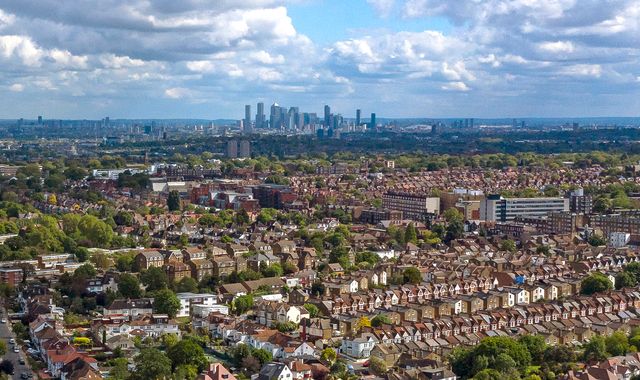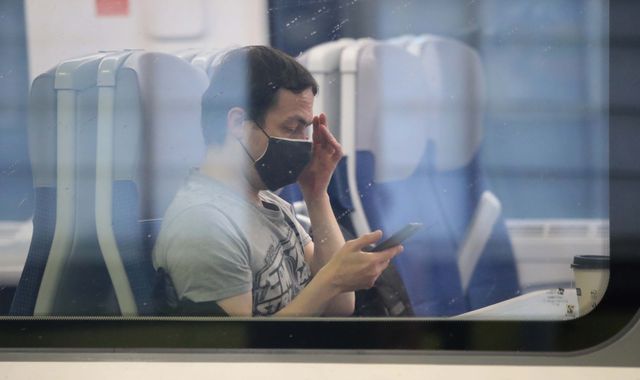Coronavirus could be ‘wiped out in London in weeks’ – but what’s the picture in the rest of England?
Written by News on 15/05/2020
The number of people becoming infected with coronavirus each day in London may have fallen to 24, while the North East of England sees around 4,000 new infections daily, research suggests.


The rate of infections in England also appears to be slowing, according to modelling by Public Health England and the University of Cambridge’s MRC Biostatistics Unit.
Data shows that the R value across England is 0.75, firmly under 1.0 – which the prime minister specified as a requirement for the continued easing of lockdown measures in the coming months.
But that is at odds with government scientists, who are understood to be sceptical that the number of new infections is so low in the capital, and estimate the R number has risen to between 0.7 and 1 nationally.
There were 49 patients admitted to hospitals in London yesterday.
For every admission there are likely to be 20 other cases in the community – bringing the total number of new infections closer to 1,000.
The R value represents how many people on average an infected person goes on to infect
If the R is 1, then one person with the disease infects one other person. If it is 3 – which Boris Johnson said seemed to be the “natural rate” for coronavirus – then one person will infect three.
If R drops below 1 then the virus isn’t being spread to enough people to sustain an outbreak, so it gradually peters out. The closer it is to zero, the faster cases drop.
In the North East and Yorkshire the R rate is 0.8, in the South West it’s 0.76, in the North West it’s 0.73, in the South East and East of England it’s 0.71 and in the Midlands it’s 0.68, according to the research.
London’s average rate has fallen to 0.4, meaning that for every 10 people who are infected, they are likely to pass it onto four people.
The figure also means the capital has gone from being the epicentre of the UK outbreak to having the lowest rate of infection in England.
When the lockdown was announced on 23 March, London was seeing more than 200,000 new cases daily, according to the research.
But there are now fewer than 24 daily infections in the capital and, with this number halving every 3.5 days, the virus could be wiped out there within just a few weeks.
The study will raise pressure on the government to consider lifting the lockdown at different speeds in different parts of the country.
Cabinet minister Robert Jenrick alluded to the idea of different rules for different areas at the weekend, when he told Sky’s Sophy Ridge On Sunday programme: “… if we see there are outbreaks in particular localities, neighbourhoods, schools, towns, then we may be able to take particular measures in those places as we build up a more sophisticated and longer-term response to controlling the virus”.
Health Secretary Matt Hancock has previously said the government was “looking at” the possibility.
Speaking to Sky News, Northern Ireland Secretary Brandon Lewis said: “We’ve all got a part to play in that by following the guidelines, including in London.
“If their analysis is correct and London is that much lower than elsewhere, it’s important that we don’t allow that to rise again, whether it’s London, whether it’s the North East or any other part of the UK.
“Continuing to follow the guidelines that are set out is important in terms of keeping that R level within some control.”
It comes as a new study suggests more than 25% of the UK is likely to have had coronavirus already.
Researchers from the University of Manchester, Salford Royal and Res Consortium used local authority data to calculate the R value – the number of people infected by one person with COVID-19 – for each area.
The data from the 144 local authorities analysed by the team now gives an R value of well below 1. The value was above 3 in the middle of March.
Dr Adrian Heald, one of the researchers on the study – published this week in the International Journal of Clinical Practice – said: “COVID-19 is a highly infectious condition and very dangerous for a small group of people. However a much larger group seem to have low or no symptoms and have been unreported.
“This study tries to provide an estimate of the number of historic infections – and gives us all a glimmer of hope that there may be light at the end of the tunnel.
“We show how effective social distancing and lockdown has been. Though this is a tragedy, it could have been far worse”.
On Monday, Mayor of Greater Manchester Andy Burnham told Sky News that the changes to the lockdown regulations announced by the prime minister on Sunday night were “premature”.
“The PM’s statement comes too soon for the North West and could cause confusion,” he said.
“My message to the people and businesses of Greater Manchester is this: please be cautious and take time before making any changes to your routine.”
Meanwhile, leaders of local authorities and unions chiefs have also accused ministers of going too fast on plans to reopen schools and want more local control over their return.
The Local Government Association (LGA) has said schools should be allowed to make their own decisions about reopening.
:: Listen to the Daily podcast on Apple Podcasts, Google Podcasts, Spotify, Spreaker
Councillor Judith Blake, chairwoman of the LGA’s children and young people board, said parents were “anxious” about sending their children back to school and said more needed to be done to reassure families.
Mr Johnson when announcing his plans for taking England out of lockdown, said Reception, Year one and Year 6 pupils could go back as soon as next month.
Analysis: Study raises a number of lockdown questions for government
By Isla Glaister, data journalist
The Cambridge study raises a number of questions for ministers when considering how and when to ease the lockdown. It models deaths data produced by Public Health England up to 10 May. This includes only people who have tested positive for COVID-19.
The regional variations suggested are wide, with the prevalence of the virus and the crucial R value said to be much lower in London than other parts of England, particularly the North East & Yorkshire. This confirms what we have seen in other recent data, including the reduction in the level of hospital patients with COVID-19.
The number of newly confirmed cases is also smaller in London. Over the last week the increase in that region has been just one third of that in the North East & Yorkshire. However, the median estimate of just 24 daily infections for the capital appears optimistic. In the most recent days, the number of new cases there has ranged from 44 to 95 and these are just those people able to access a test.
It is also worth pointing out the variation within regions, with some local authorities more affected than others. For example, in the North West, Barrow has an infection rate of 825 cases per 100,000 population, whereas the corresponding figure for Eden is just 178.
(c) Sky News 2020: Coronavirus could be ‘wiped out in London in weeks’ – but what’s the picture in the rest of England?






